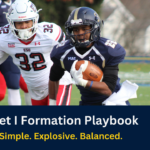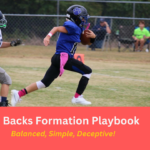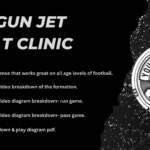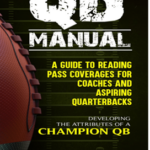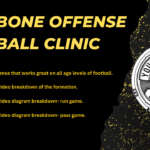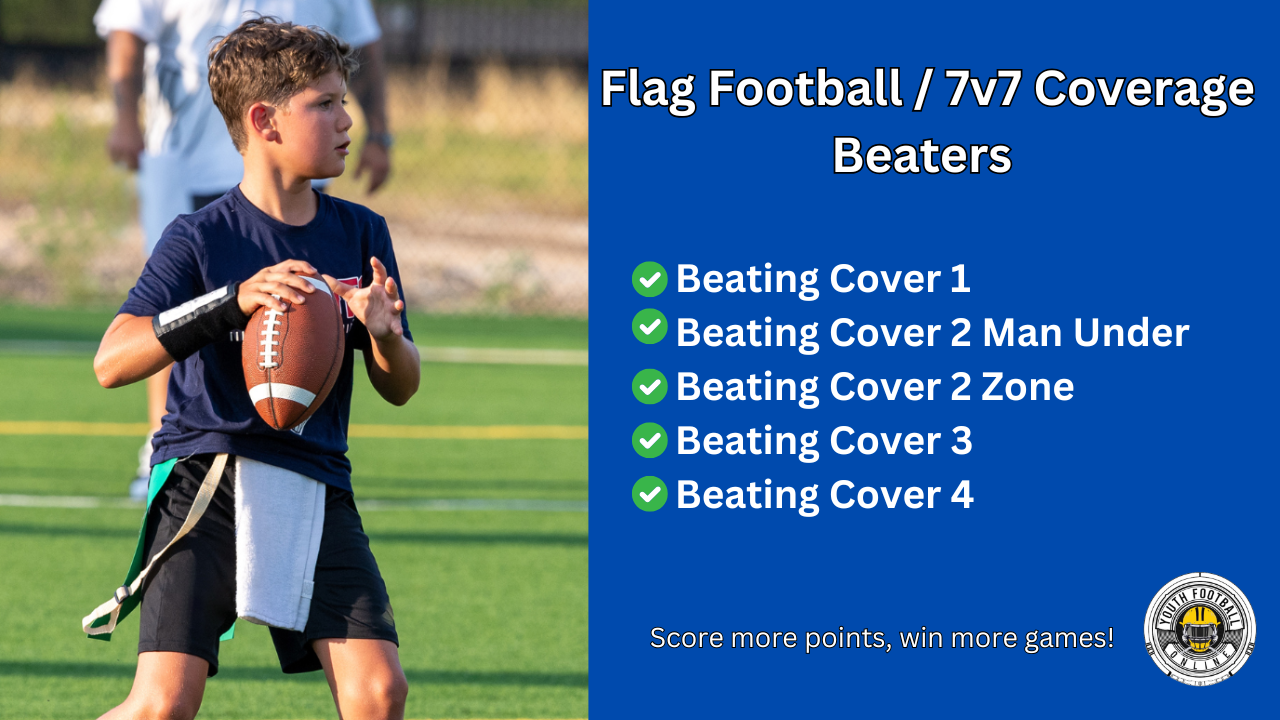Create Space for your Playmakers by Installing the Grand Canyon Play
We believe in creating space for our playmakers. We have a deep held belief that if we get the ball to our playmakers and they are matched up against a defender one on one, our playmakers will make good things happen. We go about this in a variety of different ways but our Grand Canyon play is one of the most efficient ways of doing this.
Create Space for your Playmakers by Installing the Grand Canyon Play
On our Grand Canyon play we start with our Trips Stack alignment. We love this alignment because it really stresses the defense on how they will cover our number three receiver to the trips side. We stack our receivers wide to force the Cornerback to move all the way out to the edge of the field. We then put our number two receiver directly behind him. This allows us to throw a quick screen out to the widest edge of the field if the defense does not honor our two receivers wide. We then take our number three receiver and have him split the difference between the outside receivers and the Tackle. The effect is that he is isolated in space, and normally going against a linebacker.
On our Grand Canyon play we will add to the difficulty of defending this formation by motioning our Running Back all the way out to the wide stacked receivers. This causes lots of stress for a defense because they now must honor four different threats spread all across the field. We have the option to go to our backside receiver, our isolated #3 receiver, we can throw the ball out to the wide stack and our Quarterback can also run with the ball. This is the definition of making the defense defend the whole width of the field.
Related Content: Now Screen RPO from the Outside Zone
The routes on the Grand Canyon play are designed to give our Quarterback the option to attack each of these four areas and punish the defense when they overcompensate in one area. The first read is to throw the ball to our Running Back wide. If the defense does not adjust to the motion it will likely be a Cornerback and Safety or Nickle defender against two receivers and the Running Back. Our receivers are very strong blockers so we like this match up, but if you didn’t you could always run one receivers on a Go route to take one of the defenders with him.
On the backside of the route we have our receiver isolated against a Cornerback. If this is a matchup we like we will sometimes just take a shot on a Fade or a Comeback. If we don’t like the one on one route on the backside we will have the receiver run a Post Curl. This is a great route against man coverage and if the defense does not have an extra pass defender to the inside of the Cornerback (either a Safety or a Linebacker) this route should be open.
Related Content: Spread Offense Playbook for Youth Football
While these routes are designed to attack the defense that is either over or under adjusting, the inside route by the receiver is the matchup we are looking to get to. Our inside receiver is normally our best route runner and most dynamic player in space. On Grand Canyon he will be running a Deep Choice Route. We teach this by telling him that he is going to default to running a Seam into space. If there is a Safety over the top of him he is going to run a Skinny Post. This give the Quarterback an easy High Low Read on the Backside Safety. If the Safety stays over the top he will throw the Post Curl and if the Safety comes down to defend the Post Curl he will go over the top.
Grand Canyon is a nice play because it is an easy install for the receivers. While it can be time consuming and take many reps for the Quarterback to learn, it is a great concept because it forces the defense to adjust on the fly to a very difficult formation.


